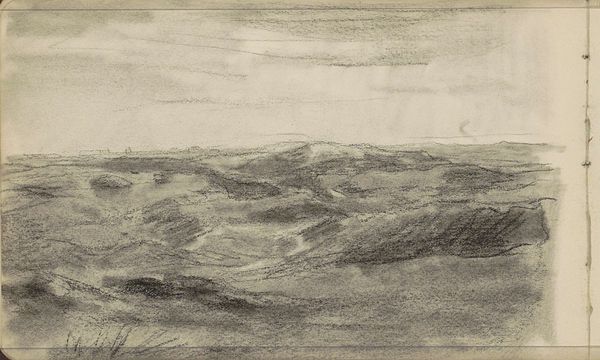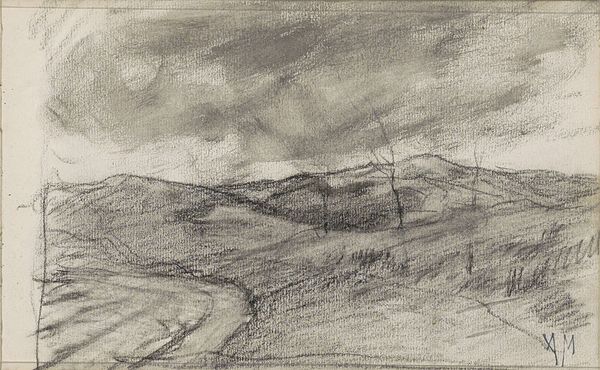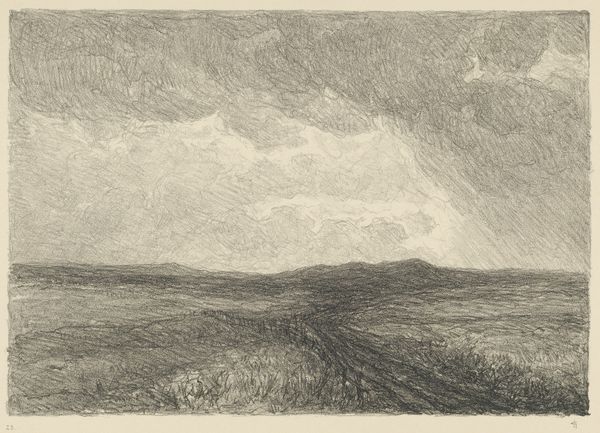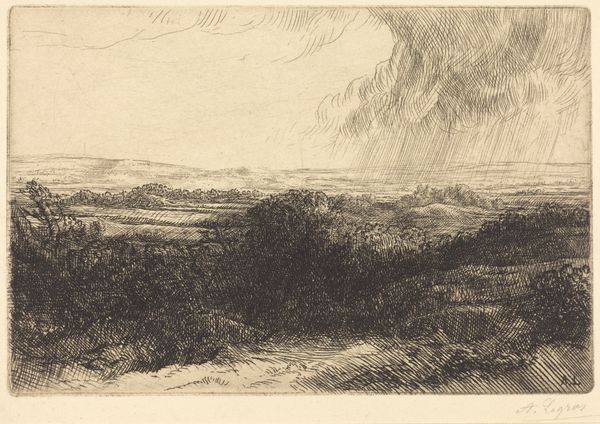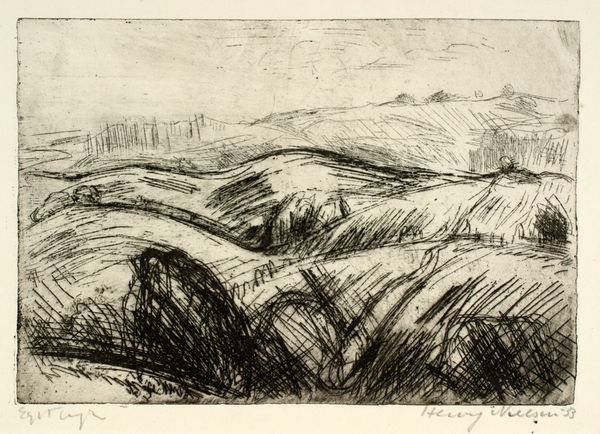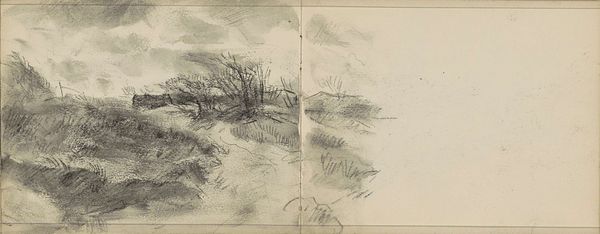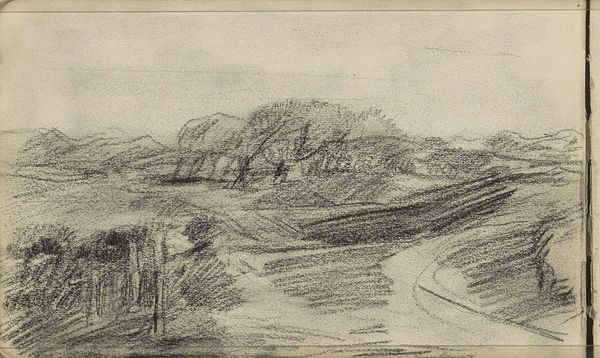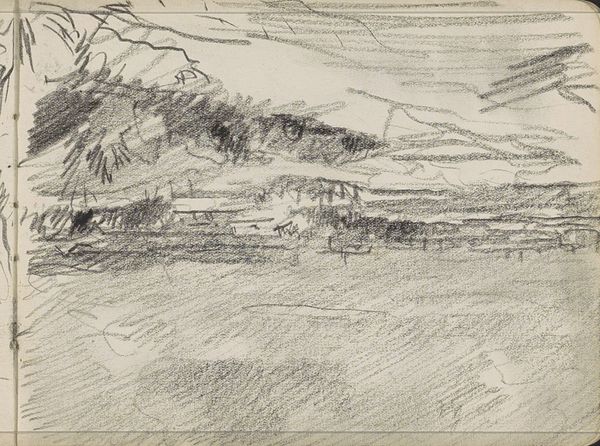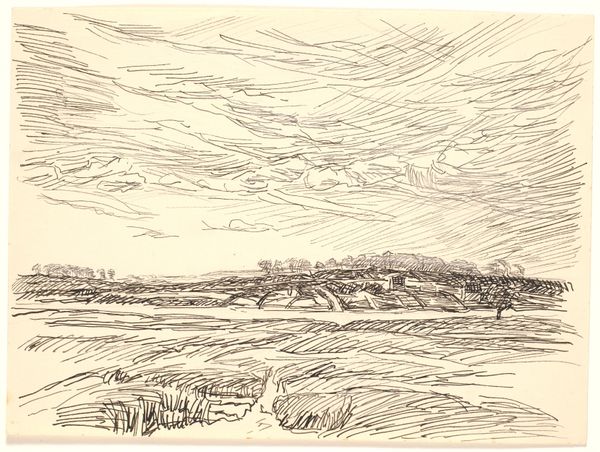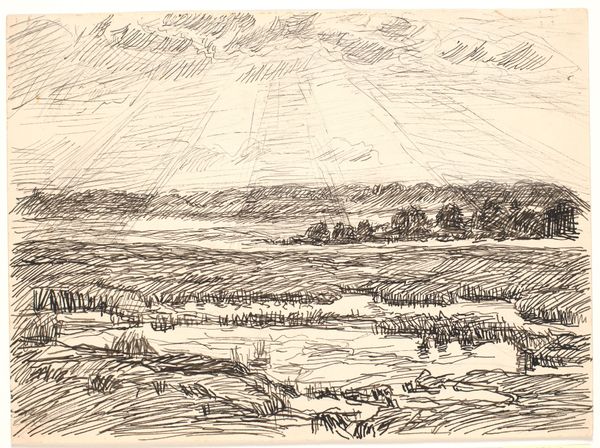
drawing, pencil
#
drawing
#
dutch-golden-age
#
impressionism
#
pencil sketch
#
landscape
#
pencil
#
realism
Copyright: Rijks Museum: Open Domain
Curator: This is "Landschap," a landscape drawing by Anton Mauve, created sometime between 1848 and 1888. It’s currently held in the Rijksmuseum's collection. Editor: Immediately striking is the sense of foreboding. The tonal range, primarily grey, contributes to the heavy, almost oppressive atmosphere. It looks desolate, and yet, there's a subtle beauty in its starkness. Curator: Mauve’s exploration of the landscape, even in a simple pencil drawing, reveals a great deal about artistic production during the Dutch Golden Age and the evolving style moving into Impressionism. Consider the paper stock available and how widely distributed drawing materials had become at this time, this wasn’t art limited to an elite anymore. Editor: Note the way the lines converge towards the horizon, drawing the eye deep into the scene. And how the contrast between the light sky and dark foreground adds depth. Curator: And within the seeming simplicity is great labor. Pencil wasn’t simply picked up and used without thought. Its production, distribution, its accessibility for even sketching… all important context for considering its value in relation to other artistic media at this time. Editor: Indeed, that pencil, in Mauve's hand, achieves remarkable texture. Observe the differences in the rendering of the sky compared to the ground, creating palpable contrasts. This speaks to the semiotic possibilities of the simple tool. Curator: Consider Mauve's social standing and the audience for these sketches. Was it created to refine paintings later? Was the market ready to accept these types of artworks? What types of patronage was available and did it shape these compositions? Editor: Yes, that the mark-making provides the structural scaffolding of the composition and the distribution of light shapes the experience; and I find it striking that in this unassuming drawing we still feel an echo of sublimity. Curator: Examining the materiality—paper and pencil—opens insights to Mauve's engagement with prevailing artistic tastes, revealing a society embracing realistic depictions alongside changing aesthetic sensibilities. Editor: A compelling analysis of both the artistic elements and historical contexts certainly enrich my understanding of this seemingly modest piece. Thanks!
Comments
No comments
Be the first to comment and join the conversation on the ultimate creative platform.
